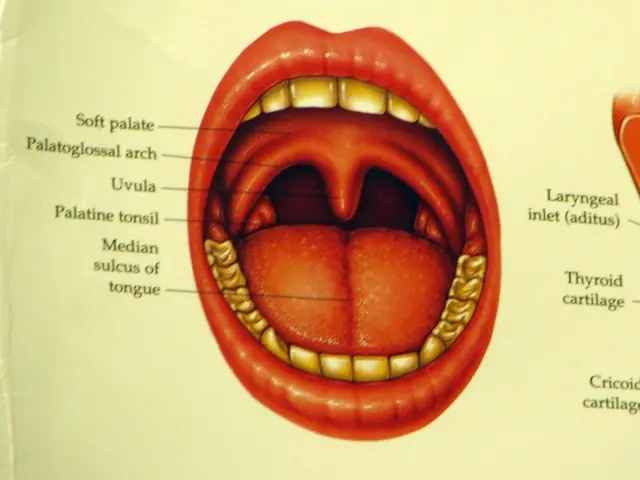Health Implications of COVID-19: Potential Hazards and Consequences
Coronaviruses, including the SARS-CoV-2 responsible for COVID-19, have a significant impact on both the respiratory system and other organs in the human body. Here's a detailed overview of these impacts:
## Respiratory System
The SARS-CoV-2 virus can lead to several respiratory complications. One such complication is pulmonary fibrosis, a condition where lung tissue becomes scarred, making it difficult for the lungs to expand properly and for oxygen to pass through. Another potential issue is pneumothorax, where air leaks into the space between the lungs and chest wall, potentially leading to a collapsed lung. Additionally, COVID-19 patients are at risk of developing pulmonary aspergillosis, a fungal infection that can worsen the disease course and increase mortality.
## Other Organs
Infections can also affect other systems in the body. For instance, gastrointestinal symptoms such as loss of appetite, nausea, vomiting, diarrhea, abdominal pain, and long-term issues like increased risk of digestive diseases including GERD can occur. SARS-CoV-2 can lead to cardiovascular issues, including myocardial infarction (heart attack), deep vein thrombosis (blood clots), and weakening of blood vessels.
Neurological symptoms such as seizures, stroke, muscle weakness, and sensations of tingling or numbness in extremities have also been reported. The virus can cause pancreatitis, an inflammation of the pancreas, and lead to kidney disease and liver dysfunction due to inflammation and blood clotting issues.
## Long-term Effects
Post-recovery from COVID-19, many patients experience chronic fatigue syndrome. Repeat infections increase the risk of organ failure, affecting multiple systems, including the lungs, heart, brain, and musculoskeletal system.
It's important to note that while vaccines are now becoming available to help reduce the risk of developing COVID-19, the best course of action remains prevention through good hygiene practices, social distancing, and wearing masks.
[1] World Health Organization. (2020). Coronavirus disease (COVID-19) advice for the public: Myth busters. Retrieved from https://www.who.int/emergencies/diseases/novel-coronavirus-2019/advice-for-public/myth-busters
[2] Centers for Disease Control and Prevention. (2020). Coronavirus Disease 2019 (COVID-19). Retrieved from https://www.cdc.gov/coronavirus/2019-ncov/hcp/clinical-care/comorbidities.html
[3] National Institutes of Health. (2020). Coronavirus (COVID-19) Treatment. Retrieved from https://www.covid19treatmentguidelines.nih.gov/overview/
[4] European Centre for Disease Prevention and Control. (2020). COVID-19: Clinical management. Retrieved from https://www.ecdc.europa.eu/en/publications-data/covid-19-clinical-management
[5] American College of Gastroenterology. (2020). Coronavirus (COVID-19) and the GI Tract. Retrieved from https://www.acg.org/patients/disease-information/coronavirus-covid-19-and-the-gi-tract
- COVID-19 patients sometimes experience respiratory complications like pulmonary fibrosis, pneumothorax, and pulmonary aspergillosis, which can hinder the lungs' functioning and oxygen passage.
- Beyond the respiratory system, SARS-CoV-2 can influence the gastrointestinal tract, causing symptoms such as loss of appetite, nausea, vomiting, diarrhea, abdominal pain, and potentially increasing the risk of long-term digestive issues like GERD.
- In addition to cardiovascular issues like myocardial infarction and deep vein thrombosis, COVID-19 patients may encounter neurological symptoms such as seizures, strokes, muscle weakness, and numbness in extremities.
- Post-recovery from COVID-19, some individuals might suffer from chronic fatigue syndrome, and repeat infections can boost the risk of organ failure, affecting multiple systems such as the lungs, heart, brain, and musculoskeletal system.




